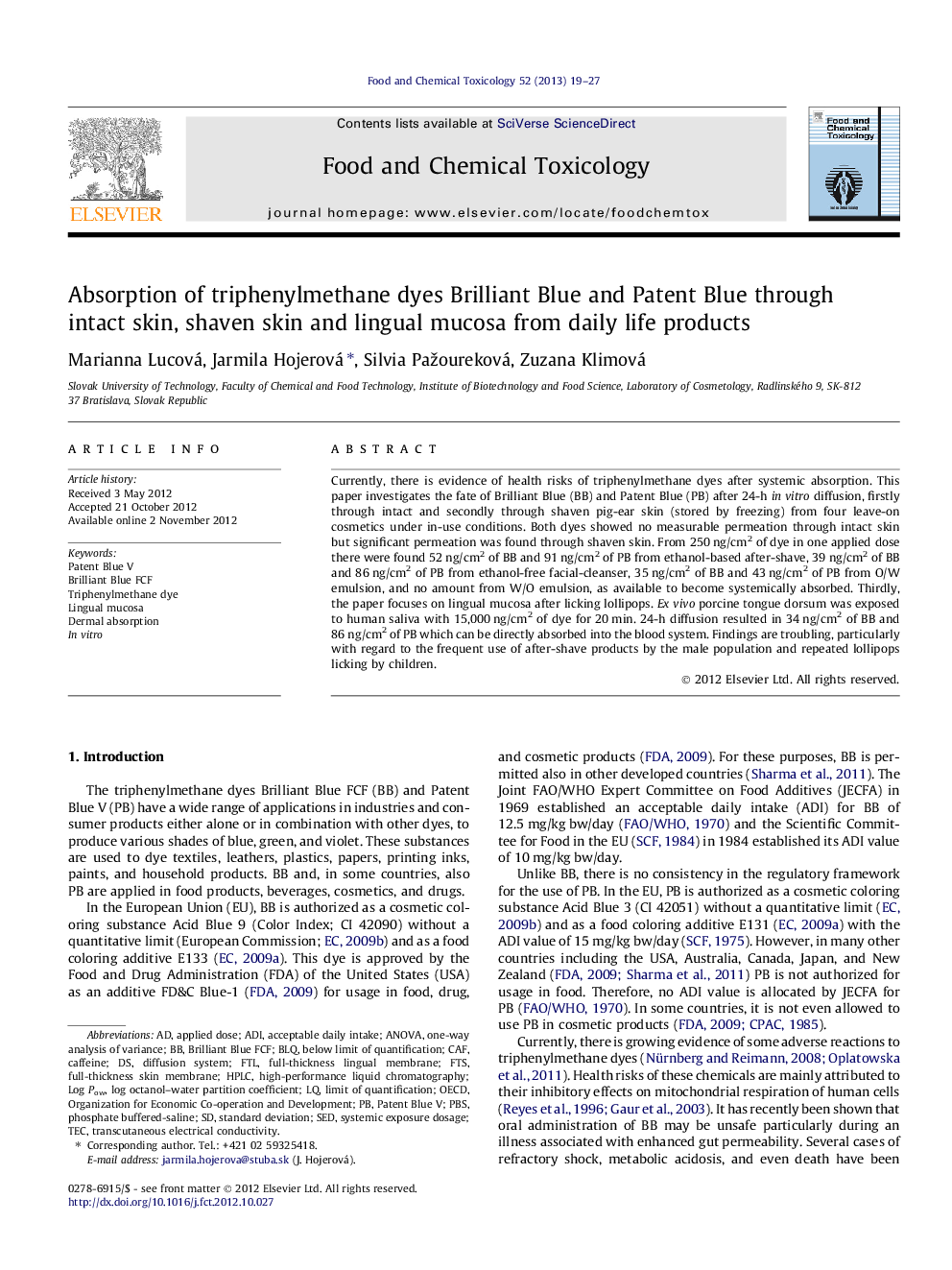| Article ID | Journal | Published Year | Pages | File Type |
|---|---|---|---|---|
| 2585242 | Food and Chemical Toxicology | 2013 | 9 Pages |
Currently, there is evidence of health risks of triphenylmethane dyes after systemic absorption. This paper investigates the fate of Brilliant Blue (BB) and Patent Blue (PB) after 24-h in vitro diffusion, firstly through intact and secondly through shaven pig-ear skin (stored by freezing) from four leave-on cosmetics under in-use conditions. Both dyes showed no measurable permeation through intact skin but significant permeation was found through shaven skin. From 250 ng/cm2 of dye in one applied dose there were found 52 ng/cm2 of BB and 91 ng/cm2 of PB from ethanol-based after-shave, 39 ng/cm2 of BB and 86 ng/cm2 of PB from ethanol-free facial-cleanser, 35 ng/cm2 of BB and 43 ng/cm2 of PB from O/W emulsion, and no amount from W/O emulsion, as available to become systemically absorbed. Thirdly, the paper focuses on lingual mucosa after licking lollipops. Ex vivo porcine tongue dorsum was exposed to human saliva with 15,000 ng/cm2 of dye for 20 min. 24-h diffusion resulted in 34 ng/cm2 of BB and 86 ng/cm2 of PB which can be directly absorbed into the blood system. Findings are troubling, particularly with regard to the frequent use of after-shave products by the male population and repeated lollipops licking by children.
Graphical abstractFigure optionsDownload full-size imageDownload as PowerPoint slideHighlights► Shaving significantly increases skin permeation of triphenylmethane dyes mainly from ethanol-based after-shave. ► Tongue is permeable for Brilliant Blue FCF and Patent Blue V from human saliva. ► The risk of systemic absorption of synthetic dyes should be explored also via slightly damaged skin and lingual mucosa.
